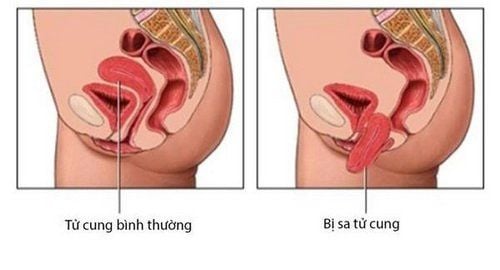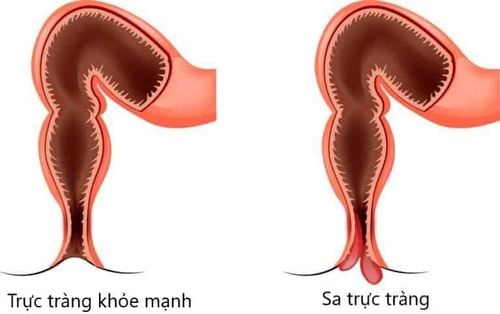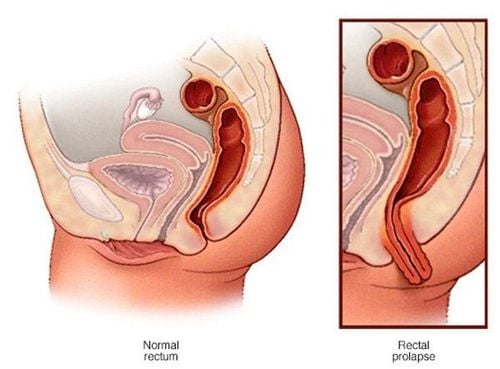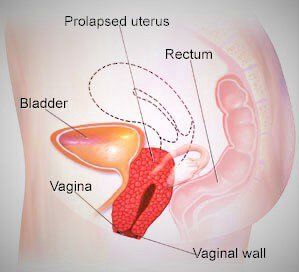This is an automatically translated article.
The article is professionally consulted with Master, Doctor Le Nhat Nguyen - Doctor of Obstetrics and Gynecology - Department of Obstetrics and Gynecology - Vinmec Danang International General Hospital.Women with the natural structure of the pelvis as well as giving birth make the risk of many diseases higher than men, one of which is pelvic problems
1. Pelvic problems include?
The pelvic organs include the vagina, uterus, bladder, urethra, and rectum. These body parts are held in place by the muscles of the pelvic floor and layers of connective tissue. Pelvic organ prolapse (POP) occurs when tissues and muscles can no longer support the pelvic organs and cause them to prolapse.2. So what is the cause of pelvic organ prolapse (POP)?
The main cause of pelvic organ prolapse is pregnancy and vaginal delivery, which weakens the muscles of the pelvic floor. Other causes include menopause, aging, and repetitive heavy pressure. Factors that put pressure on the abdomen that can cause pelvic organ prolapse include being overweight or obese; being constipated and having to strain to have a bowel movement; chronic cough caused by smoking, asthma or other medical conditions. Pelvic organ prolapse can occur at any age, but most symptoms in women worsen after menopause.
3. Symptoms of pelvic organ prolapse?
Symptoms can come on gradually and may go unnoticed at first. Many women have no symptoms and don't even know they have uterine prolapse. An obstetrician-gynecologist (ob-gyn) or other health care professional may detect pelvic prolapse during a physical exam.In mild cases of pelvic organ prolapse, the patient can sometimes feel a bulge inside the vagina. In severe cases of pelvic organ prolapse, organs can push out of the vaginal opening. Symptoms may be as follows:
Feeling of heaviness or ligaments in the vagina; Organs protruding from the vagina Leaking urine (incontinence) Difficulty emptying urine in the bladder Difficult bowel movements Lower back pain Difficulty inserting tampons or tampons into the vagina
4. Types of pelvic organ prolapse?
There are many types of pelvic organ prolapse and have different names depending on the part that is prolapsed:Bladder prolapse Small bowel prolapse Rectal prolapse Uterine prolapse Vaginal arch

5. How is pelvic organ prolapse diagnosed?
Proper diagnosis is key to treating pelvic support disease. The specialist will check the patient's history first, then perform a vaginal or rectal exam. The physical examination can be performed in a standing or sitting position. The doctor may ask the patient to push or cough during the exam to see if he or she is leaking urine. The bladder is also checked for complete emptying of urine.6. Is there a need for treatment for pelvic organ prolapse?
Many women do not need treatment. During routine checkups, a specialist will monitor this problem. If symptoms become bothersome, treatment is needed. The decision to proceed with treatment is based on an assessment of the following factors :Age Desire to have children in the future Sex life Severity of symptoms Prolapse Other health problems No form of treatment There is no guarantee that the problem will be solved, but the chance of some reduction is still there. If treatment is recommended, a specialist in pelvic support and urological problems will assist.
7. How can I relieve my symptoms on my own?
Diet and lifestyle changes can help relieve some symptoms. If your problem is urinary incontinence, limit your fluid intake and change the way you absorb water, such as reducing alcohol and caffeinated drinks. Exercise for the bladder by emptying urine at a fixed time also works well for women with urinary incontinence.Women with bowel problems can increase fiber intake to avoid constipation and straining during bowel movements. Sometimes your doctor will prescribe a stool softener for you. If a woman is overweight or obese, losing weight will improve her overall health and possibly symptoms of organ prolapse.
8. Are there any exercises to improve pelvic organ prolapse?
Pelvic floor exercises, also known as Kegels, aim to strengthen the muscles around the opening of the urethra, vagina, and rectum. Doing these exercises regularly can improve urinary incontinence and slow down the progression of organ prolapse. Your therapist and physical therapist will help you do the right exercises. Apps on the phone can also help women understand pelvic floor exercises and remind them to practice daily.8.1 How to do Kegel exercises? Tighten the muscles used to stop the flow of urine. This contraction pulls the vagina and rectum up. Hold for 3 seconds, then release for 3 seconds Repeat 10 times, do this 3 times a day Increase the time Squeeze by 1 second per week, increasing it until you hold for 10 seconds. Make sure you're not squeezing your stomach, thighs, or glutes by mistake. You should also breathe normally, don't hold your breath while you practice!
8.2 Petxe Lift Ring? The Petxe Lift is a vaginal device that supports the pelvic organs. Many women feel their symptoms reduce immediately after using Petxe. This lift ring comes in many shapes and sizes, and is intended for short- or long-term treatment. Based on your symptoms and organ prolapse, you can choose to treat with Petxe under the guidance of your doctor.

9. What about surgical measures? Can surgery treat pelvic organ prolapse?
Surgery may also be an option for women who have tried other non-surgical methods but have been unsuccessful. Surgery can treat some, but not all, of the symptoms. In general, there are two types of surgery:1) Pelvic floor surgery
2) Surgery to shorten, narrow, or close the vagina
Pelvic floor surgery to bring the organs closer to their original position. Surgery to shorten or close the vagina provides support for the prolapsed organ, but after that the patient can no longer have vaginal sex. Often cases where patients have other serious diseases and do not want to have sex anymore will choose this method.
10. So, will there be recurrence after surgery for pelvic organ prolapse?
There is still a risk of organ prolapse returning after surgery. Risk factors include being under 60 years of age, being overweight, and having severe forms of organ prolapse prior to initial surgery.Please dial HOTLINE for more information or register for an appointment HERE. Download MyVinmec app to make appointments faster and to manage your bookings easily.
The article references the source: Acog.org.













